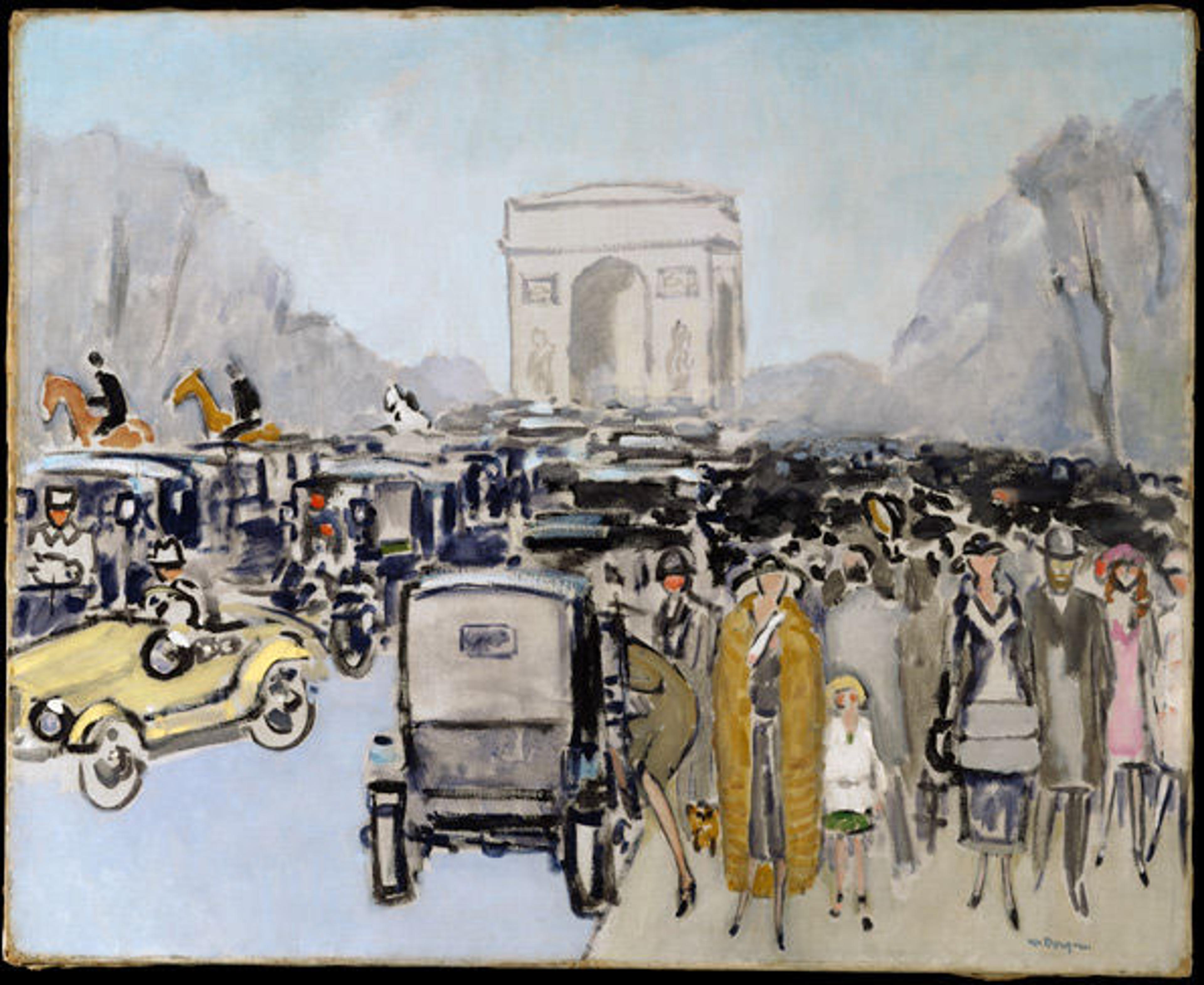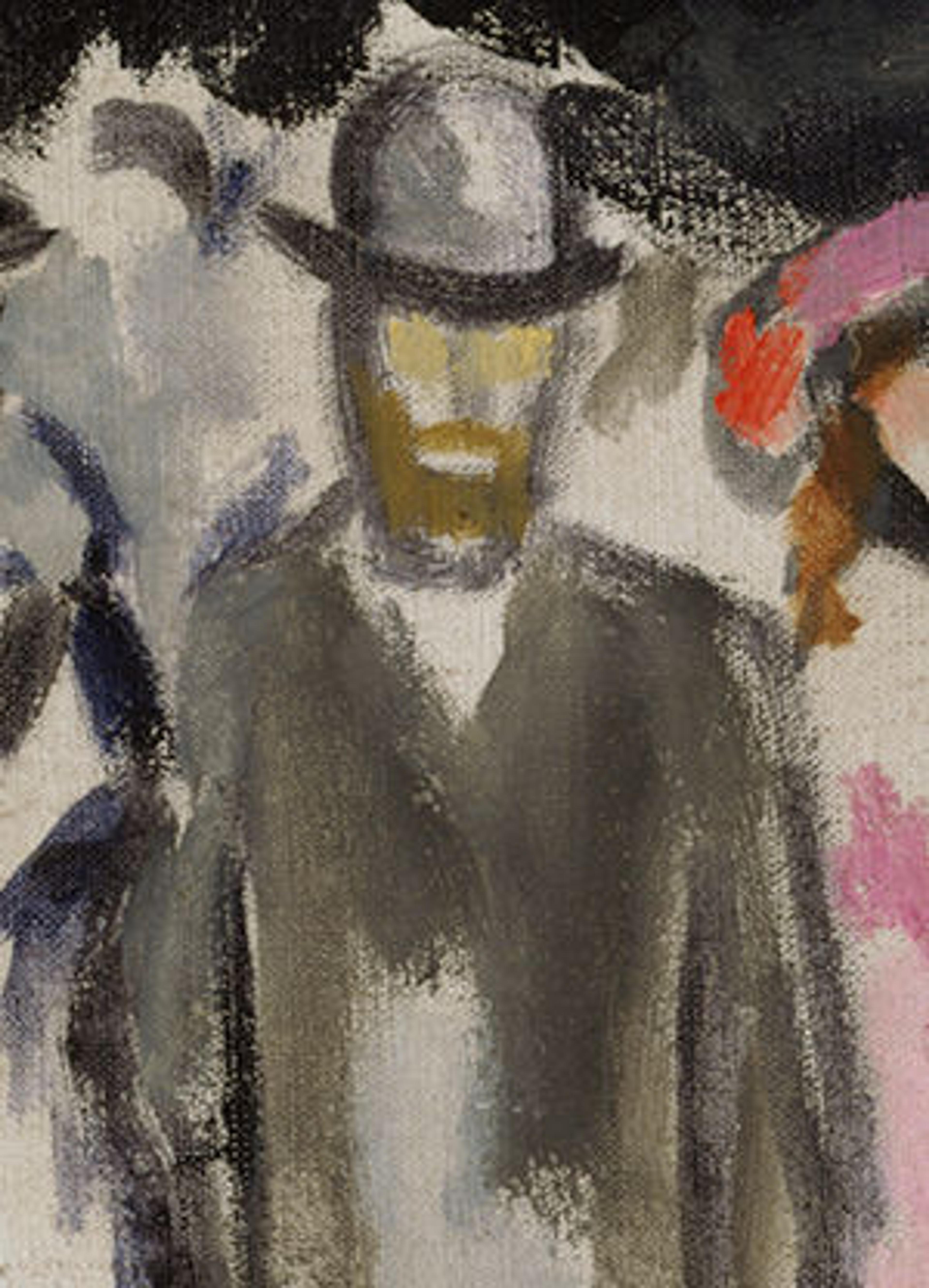Making New Art Inspired by the Met's Collections with Google Glass
«Fellow Google Glass Explorer Gretchen Andrus Andrew—a London-based artist and former Google employee—first contacted me via Twitter last October. She was aware of the Met's experimentation with Google Glass after reading my first post for Digital Underground, and was interested in meeting here at the Museum while she was visiting New York.»
I met Gretchen on a sun-filled day in The Charles Engelhard Court of The American Wing—one of the museum's reflective spaces, featuring American art, sculpture, and other decorative artworks using diverse media. As I approached the court, I discovered Gretchen wearing Google Glass and sketching in the galleries. I was immediately excited to be seeing the type of engagement that I anticipated would take place within the Museum using Google Glass: the study and reflection of the Met's collection as a means to make new art.
Gretchen uses Google Glass to record works that inspire her when visiting museums. She documents her working process of sketching and making notes, which contributes to the creation of her own paintings. While exploring Google Glass in the galleries, Gretchen and I shared an enriching conversation that spanned art history, her artistic practice, and our hopes for further integrating digital technologies into the museum experience. Gretchen was pleased that the Met was on the forefront of engaging digital technologies such as Google Glass, and was excited by our efforts here to understand the convergences between museums and digital media in contemporary life.
Gretchen exemplifies the type of constituent that museums immersed in the digital culture should work to inspire and connect with. I invited Gretchen to join me in making this a collaborative blog post, and am thrilled to have her participate here on Digital Underground.
From Gretchen:
The Metropolitan Museum of Art's mission includes "encouraging and developing the study of the fine arts" as a founding principle, and generations of artists have positioned themselves in their own cultural milieu by studying artworks in the Met's collection. Creating new artwork is one of many possible responses to the study of the fine arts, as well as a form of cultural resonance. As a contemporary artist, I consciously define my relationships to the works found in The Metropolitan Museum of Art.

Kees van Dongen (Dutch, 1877–1968). Avenue du Bois, ca. 1925. Oil on machine-primed canvas; 31 7/8 x 39 1/2 in. The Metropolitan Museum of Art, New York, Robert Lehman Collection, 1975 (1975.1.227). © 2011 Artists Rights Society (ARS), New York
When I walk through this Museum, I scan for inspiration. As an artist, I am here to learn, to record, to borrow, to gather inspiration from the art of history to use in my contemporary paintings. Using Google Glass I document colors, forms, and techniques in the Museum's collection to bring back into my studio. For me, the Met is a living museum; its collection has the potential for new life within my work.

As Neal previously mentioned, I brought Google Glass during a recent visit to the Met, and used the technology to capture images of a painting in The Robert Lehman Collection, Kees van Dongen's Avenue du Bois. I was drawn in particular to the man with a bowler hat in the lower right corner. Later, in my studio, I reviewed the content captured with Google Glass and began creating preliminary watercolor sketches inspired by van Dongen's figure.
Left: Kees van Dongen (Dutch, 1877–1968). Avenue du Bois(detail), ca. 1925. Oil on machine-primed canvas; 31 7/8 x 39 1/2 in. The Metropolitan Museum of Art, New York, Robert Lehman Collection, 1975 (1975.1.227). © 2011 Artists Rights Society (ARS), New York
I then transferred the sketches onto a primed cotton canvas using black charcoal. Inspired by the style of Edvard Munch, I created two figures in my composition related to the figure cited from the van Dongen. Once the major forms were drawn, I applied a deep Prussian blue–colored high-solvent oil paint with fluid brush strokes on the canvas. I tipped the canvas at critical points in the process, causing the pigment to cascade in a tonal wash over the picture. I continued to paint wet on wet, not allowing the previous layers to dry before adding new ones.
I titled my new painting Patient Hope in New Snow. The painting's style and subject matter reverently depart from its precedents, resulting in the creation of a new work synthesized from art-historical sources and the development of my own artistic process. In Avenue du Bois, van Dongen's figures are in a crowded mess of other Parisians, horses, and cars in front of the Arc de Triomphe; in my painting, I place the bowler-hatted man within a new figure group emerging from an abstracted and atmospheric landscape. The trees and the sky appear to share in, or are possibly caused by, the emotional aura of the figures. I've transported van Dongen's sense of motion from the bustling city street out into nature—into harmony with humanity's inner life.

Left: Gretchen Andrus Andrew. Study for Patient Hope in New Snow, 2013. Right: Gretchen Andrus Andrew. Patient Hope in New Snow, 2013. Homemade oil on cotton; 36 x 48 in. These works are licensed under a Creative Commons Attribution-ShareAlike 4.0 International License.
With Google Glass I am able to tell the story of how contemporary art comes directly from the study of fine art at institutions like the Met. When contemporary artists use Google Glass to connect with museum collections, they can become more informed and conscious of art history. Digital culture unites dispersed people and connects artists across time, and as an artist, my work is inevitably strengthened by this kind of access to The Metropolitan Museum of Art's collections. After leaving the Met, I then enter my studio knowing the story, attempting to write its next chapter.
Links
Gretchen's complementary post on Underscoreg.com
Gretchen's Presentation, "Google Glass & Art: Shareable, Visual Process"
Follow Neal
Twitter: @nealstimler
Google+: Neal Stimler
Follow Gretchen
Twitter: @gretchenandrew
Google+: Gretchen Andrus Andrew
Neal Stimler
Neal Stimler is the content partnerships manager in the Digital Department.
Gretchen Andrew
Guest blogger Gretchen Andrus Andrew is an artist based in London, England.